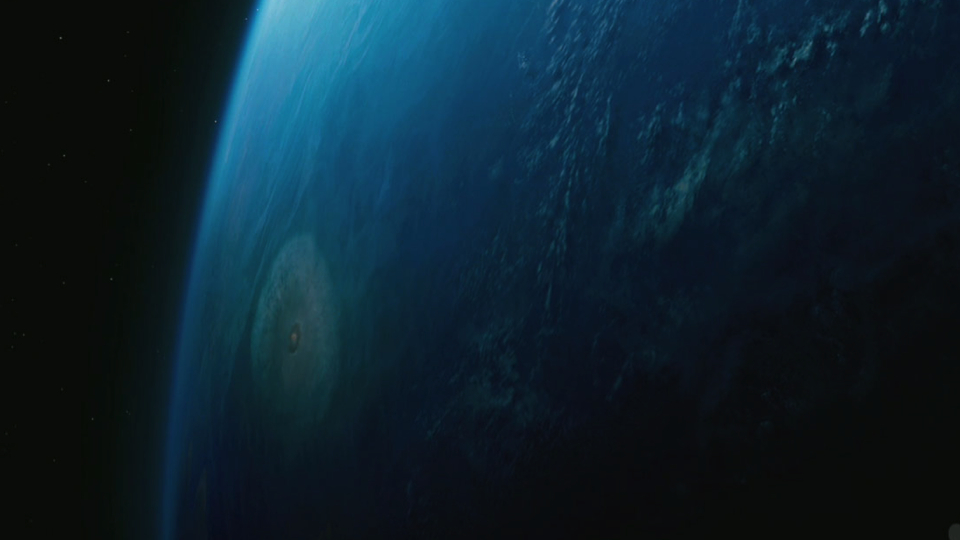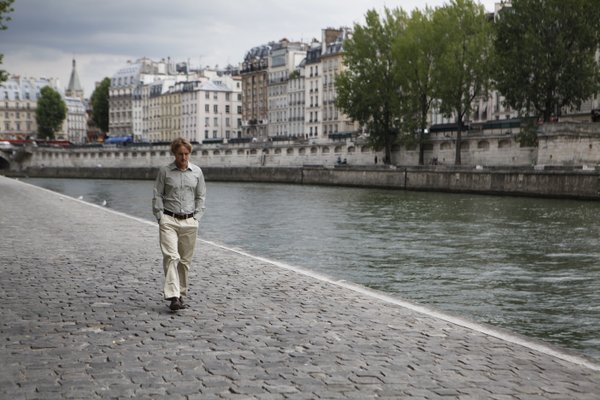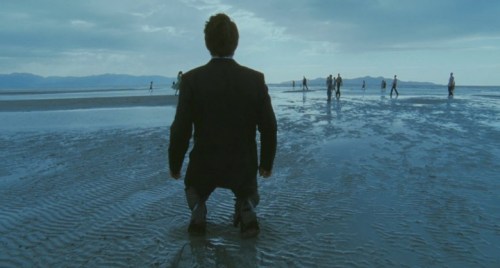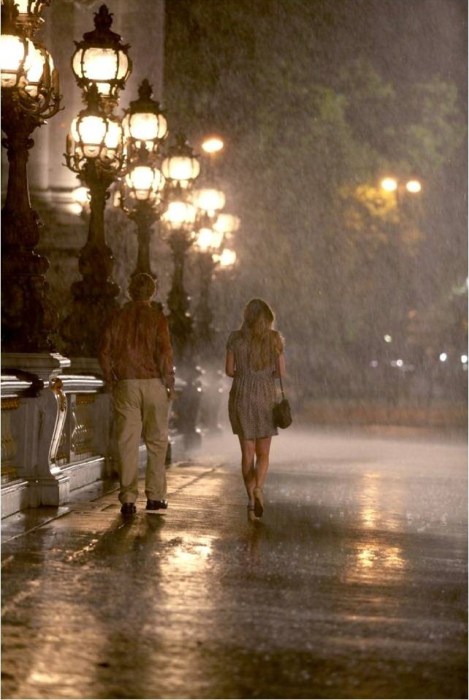

The long wordless montage – It never happens anymore. So when it happened not just once, but during two movies in recent weeks, I was so jolted that I was actually impatient. But only for a few moments. The Tree of Life and Midnight in Paris threw me so off-guard that for a moment I said to myself “Come on! Let’s go!” until I settled back and just let their montages cascade and unfold naturally. The wordless montages could have been cut in order to propel to the next requirement of the “story.” But now that they have been experienced these montages to me are now indispensable.
One of the great non-verbal sequences is the ten-minute Star Gate sequence in “2001: A Space Odyssey” (1968, pic below). I discovered that film at a young age and so the long sequence, breathtaking almost for the purpose of being breathtaking on a visceral level, became normal to me at an early age. It remains one of my ten favorite films of all-time. A previous experiment was made in the Swedish film “Persona” (1966), also in my top ten.

Visual and music feasts that stand outside of immediate storytelling and within symphonic sensations are rare but were certainly more prominent during the directorial freedoms of the 1970’s and 1980’s. “Walkabout” (1971), “Fellini’s Roma” (1972), “The Man Who Fell to Earth” (1976), “Close Encounters” (1977), “Apocalypse Now” (1979), “The Shining” (1980), “Blade Runner” (1982), “Brazil” (1985) all contain hypnotic sequences built around symphonic image-layering and atmospheric music. In recent years Darren Aronofsky went for transcendent spectacle with “The Fountain” (2006) but while watching it in my first viewing, somehow I expected him to operate like that. The end of Aronofsky’s significant film is stunning although it seemed that only some of the dialogue scenes – not all but some – put me in a state of brief impatience.
But here we are in the month of June 2011.
“The Tree of Life” is the closest in 43 years to capture the hypnotic universe-is-bigger-than-man montage that was instrumental in “2001.” Shaking your head no? Well you haven’t seen Terrence Malick’s film yet. The ads show you nothing of the cosmological expansion of the universe and the atomic formation of the Earth billions of years ago. Malick puts on an abstract light show similar to what Kubrick conceptualized in “2001.” Malick’s cascade of imagery, while in the abstract, is more exact and carefully modulated than Kubrick’s in showing us the evolution of pla netary creation. The long, long sequence isn’t exactly as spellbinding as “2001” only because Kubrick had a gift for accompanying music that pierced something deep inside us. But Malick has indeed done something dazzling. When I realized that Malick wasn’t going to cut short I had then embraced the ceaseless beauty and couldn’t help but ask for more, for which he gave. I was thankful he gave us more for his film’s ending.
netary creation. The long, long sequence isn’t exactly as spellbinding as “2001” only because Kubrick had a gift for accompanying music that pierced something deep inside us. But Malick has indeed done something dazzling. When I realized that Malick wasn’t going to cut short I had then embraced the ceaseless beauty and couldn’t help but ask for more, for which he gave. I was thankful he gave us more for his film’s ending.
“Midnight in Paris” opens by showing us romantic shots of all over Paris. Not shots of people romantic with each other, although there is a sprinkle of that. I’m talking shots that romanticize the city of Paris at large. In 1979, Woody Allen opened “Manhattan” with a city montage scored to George Gershwin. This time, Allen opens his film with a city montage scored to Cole Porter. I didn’t feel or appreciate the music as much as I should have in the one time that I’ve seen it. It’s not that I’m a connoisseur of Cole Porter’s music. It’s just over the years Allen has f requently put his music into his films and so I’ve come to an appreciation. But back to the art of montage, I was jolted if not boggled by the opening, and was anticipating the first “real” scene. When Allen was going past the first minute mark with this, then I realized and said to myself, “Oh, I should just bathe in this. It’s only a three and a half or four minute opening (I’m unsure). But within a few moments I had allowed myself to become swept up by Paris, the City of Love, The Illuminated City, as it’s called.
requently put his music into his films and so I’ve come to an appreciation. But back to the art of montage, I was jolted if not boggled by the opening, and was anticipating the first “real” scene. When Allen was going past the first minute mark with this, then I realized and said to myself, “Oh, I should just bathe in this. It’s only a three and a half or four minute opening (I’m unsure). But within a few moments I had allowed myself to become swept up by Paris, the City of Love, The Illuminated City, as it’s called.
How do I regard both films by the way? I uphold “The Tree of Life” as one of the fifty best films I have ever seen, and my love of it might even elevate once I see it again – on the big screen, of course. “Midnight in Paris” is my favorite Woody Allen film since his glowingly nostalgic “Radio Days” (1987), and it’s my sixth favorite of his ever. My love might take it to number five if I’m just as enchanted by a second viewing. Owen Wilson is Allen’s most lovable character in a long time, and the rest of his gallery of characters (Rachel McAdams notwithstanding) had me in unconditional delight.
Why did reluctance and lower grade consciousness suppress me for initial moments during these montages, though? I think what happened is that when the montages were unspooling I thought maybe that they would last thirty seconds and that they would cheat us – and cheat themselves artistically – but cutting short before a genuine sensual groove was exalted. But the artistry is not cheap in either film. Instead these two films are looming with visual surprises, with melodic tempos, with meditative worth, continuing at their own idiosyncratic pace. The lesson learned is to never underestimate the possibilities of where movies are willing to go even if we are in the 21st century of impatient times.




